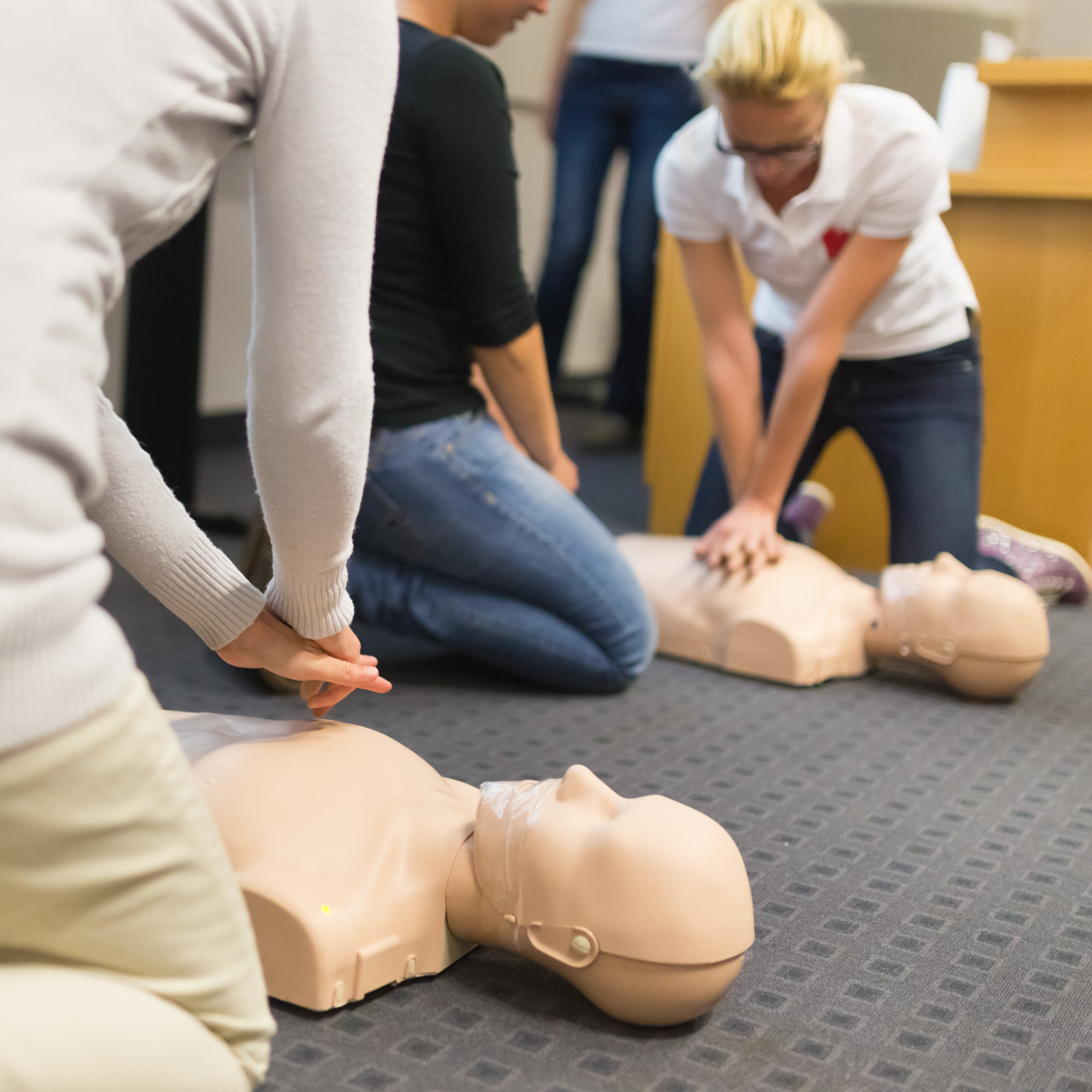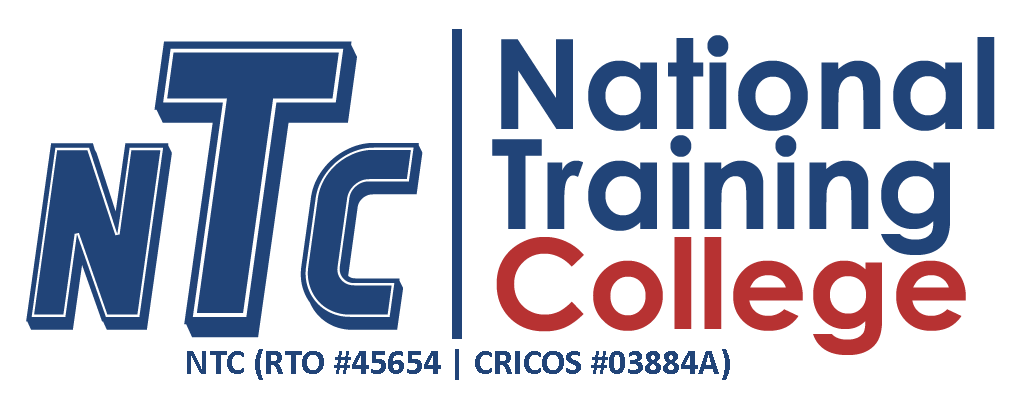- Course Name
- HLTAID010 Provide basic emergency life support (No Online)
- Course Code*
-
HLTAID010 Provide Basic Emergency Life Support (BELS)Additional Accredited Units IncludedHLTAID009 Provide Cardiopulmonary Resuscitation (CPR)
- Course AKA Code(s)
- Level 1 first aid
- Course Cost
- $79
- Is the course accredited?
- Yes
- Course Duration
- 6 Hours Face-to-Face
- Available Discounts
- Group Booking Discounts Available

HLTAID010 Provide Basic Emergency Life Support (BELS)
The HLTAID010 Provide basic emergency life support support course covers the skills and knowledge required to recognise and respond to life-threatening emergencies in line with the Australian Resuscitation Council (ARC) guidelines.
Included in this course is the skills and knowledge required to perform cardiopulmonary resuscitation (CPR) in line with the Australian Resuscitation Council (ARC) Guidelines.
This course is sometimes referred to as BELS.
Covid-19 Precautions
At NTC your health and safety is our priority. Infection control measures and COVID-19 practices are applied across all our training facilities. Please remember if you are unwell or experiencing any symptoms, we ask that you contact us to reschedule your training. For further information please email [email protected].
How is the Course Delivered?
No Online Workbook or E-Learning Required
Training and Assessment are delivered Face to Face (4hours)
Plus + Prior to attending the face-to-face training session, you are required to complete the pre-course reading, and complete the quiz and bring it to the training session on the day. This is a self-paced, self-directed, and mandatory component of the course. The actual number of study hours required for each learner varies depending on the learners existing knowledge, skills, and experience.
How is the Course Structured?
All learners will be assessed through a combination of the following assessment methods:
- Practical Demonstrations: Simulated scenarios/Role playing
- Project (Incident Report)
- Knowledge Assessment
Course Requirements
- Participants must be 14 years of age (Those who are under 18 must present enrolment form from a parent or guardian to accept responsibility)
- Prepare verbal incident reports or provide information to enable preparation of an incident report (e.g. first aid report)
- Communicate effectively and assertively in an incident (e.g. give a casualty handover)
- Use literacy and numeracy skills as require reading, interpret, and apply guideline and protocols (e.g. read and follow ARC guidelines)
- Perform at least 2 minutes of uninterrupted single rescuer CPR (5 cycles of both compression and breaths) on an adult manikin placed on the floor
- Perform at least 2 minutes of interrupted single rescuer CPR (5 cycles of both compression) on a infant manikin placed on the firm surface
- Participants with a disability may impact the ability to complete the course requirements, please email the office to discuss your personal situation at ([email protected])
Course Fees
$79 (Varies from State to State)
Includes:
- HLTAID010 Provide basic emergency life support
- HLTAID009 Provide cardiopulmonary resuscitation
Course Times and Availability
This course suits workplace training. Please contact the office to arrange your preferred date and location.
First Aid Certificate Issued Same Day
Fully Accredited | Same Day Certificates (see terms and conditions)
On the Day, after Successful Completion of the Training Course:
- All BELS Certificates (Statement of Attainment) are issued electronically in, HLTAID010 Provide basic emergency life support and HLTAID009 Provide cardiopulmonary resuscitation. (T&C)
- Additionally, hard copies HLTAID010 Provide basic emergency life support, and HLTAID009 Provide cardiopulmonary resuscitation can be purchased for a fee of $12 including postage.
- As recommended by the Australian Resuscitation (ARC). The HLTAID009 Provide cardiopulmonary resuscitation component of the course is valid for 12 months and will need to be updated annually for you to keep your certification current.
USI Requirements
In line with new government regulations, from January 1, 2018, all students undertaking a nationally recognised training course need to have a Unique Student Identifier (USI). USI’s only need be created once, and the number generated is yours for life. So, if you are already studying at college or university it is likely that you may already have a USI that you can use. Applications for a USI take less than 5 minutes and can be completed HERE.
Course Content
This will provide you with the skills and knowledge required to provide first aid response, life support, management of casualty(s), the incident and other first aiders, until the arrival of medical or other assistance.
Knowledge Evidence
The candidate must be able to demonstrate essential knowledge required to effectively complete tasks outlined in elements and performance criteria of this unit, manage tasks and manage contingencies in the context of the work role
. This includes knowledge of: State/Territory regulations, first aid codes of practice and workplace procedures including:
- ARC Guidelines relevant to provision of CPR and first aid
- safe work practices to minimise risks and potential hazards
- Infection control principles and procedures, including use of standard precautions
- requirements for currency of skill and knowledge
Legal, workplace and community considerations, including:
- awareness of potential need for stress-management techniques and available support following an emergency situation
- duty of care requirements
- respectful behavior towards a casualty
- own skills and limitations
- consent
- privacy and confidentiality requirements
- importance of debriefing
considerations when providing basic emergency life support, including:
- airway obstruction due to body position
- appropriate duration and cessation of CPR
- appropriate use of an AED
- chain of survival
- standard precautions
principles and procedures for first aid management of the following scenarios:
- allergic reaction
- anaphylaxis
- bleeding control
- cardiac conditions, including chest pain
- choking and airway obstruction
- respiratory distress, including asthma
- shock
- stroke
basic anatomy and physiology relating to:
- considerations in provision of first aid for specified conditions
- chest
- how to recognise a person is not breathing normally
- response/consciousness
- upper airway and effect of positional change
Performance Evidence
The candidate must show evidence of the ability to complete tasks outlined in elements and performance criteria of this unit, manage tasks and manage contingencies in the context of the job role.
There must be evidence that the candidate has completed the following tasks in line with state/territory regulations, first aid codes of practice, Australian Resuscitation Council (ARC) guidelines and workplace procedures:
Followed DRSABCD in line with ARC guidelines, including:
- performed at least 2 minutes of uninterrupted single rescuer cardiopulmonary resuscitation (CPR) (5 cycles of both compressions and ventilations) on an adult resuscitation manikin placed on the floor
- performed at least 2 minutes of uninterrupted single rescuer CPR (5 cycles both compressions and ventilations) on an infant resuscitation manikin placed on a firm surface
- responded appropriately in the event of regurgitation or vomiting
- managed the unconscious breathing casualty
- followed single rescue procedure, including the demonstration of a rotation of operators with minimal interruptions to compressions
- followed the prompts of an Automated External Defibrillator (AED)
- Responded to at least one simulated first aid scenario contextualised to the candidate’s workplace/community setting, including:
- demonstrated safe manual handling techniques
- provided an accurate verbal or written report of the incident
Applied first aid procedures for the following:
- allergic reaction
- anaphylaxis
- bleeding control
- choking and airway obstruction
- respiratory distress, including asthma
- shock
